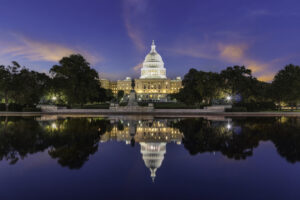The Scoop: Why Pantone’s Color of the Year yields great PR year after year
Plus: “The world’s more anonymous CEO” steps into the spotlight and antisemitism on campus fallout continues.

The color we’ll all be wearing, painting our walls and vibing with in 2024 is apparently “Peach Fuzz.”
That’s according to the Pantone Color Institute. Now in its 25th year, the institute chooses a hue every year — naturally from its own Pantone colors — that will set the tone for the year ahead.
“PANTONE 13-1023 Peach Fuzz captures our desire to nurture ourselves and others. It’s a velvety gentle peach tone whose all-embracing spirit enriches mind, body and soul,” the institute’s website says.
Their extensive online press kit offers all manner of information on how Peach Fuzz can be used in your wardrobe, your makeup, your home and your brand.
“Seemingly tactile, PANTONE 13-1023 Peach Fuzz welcomes consumers to reach out and touch. Its warm tactility makes it an enticing shade for a variety of products, from food and beverage to cosmetics and accessories,” Pantone gushes.
And the media flocks to cover it every year. From the New York Times to local TV stations, the story has mass appeal.
Why it matters
The story works year after year because it’s so simple. It’s a color, something even a child understands and is attracted to. It’s one single color, not a palette or a pathway. One color, with a catchy name and a beautiful website telling us how this color makes us feel.
Its release at the end of the year is perfect for weary journalists looking for an easy prediction story. People love to look at the color, argue about it, deny that they’ll ever wear “Viva Magenta.”
Their assets are also on point, with that lush website chock full of quotes and pictures ready to be popped into any article, and a virtual media tour also supplied outlets like CNN with additional information to go deeper.
The campaign thrives in its simplicity, built on a trusted brand name and executed at a high level.
Still, peach makes my skin look too sallow, so I’ll probably be sitting this one out.
Editors Top Picks
- Harvard, MIT and UPenn continue to face fallout over antisemitism on campus — and the responses of their presidents, The New York Times reports. After a Congressional hearing where the three leaders floundered responses on how they were handling antisemitism, they face condemnation from both sides of the aisle and donors taking back $100 million offerings unless leadership changes. The fallout from these fumbled, highly publicized comments is likely to echo for years to come.
- You’ve probably never heard of Xu Yangtian, or even his English name, Sky Xu. But you’ve certainly heard of his company, Shein, the sometimes controversial fast-fashion giant that’s now eyeing an IPO. The Wall Street Journal calls him “the world’s most anonymous CEO,” noting that even employees often don’t recognize him in the company’s offices. But as that IPO gets closer, Xu will likely have to step into the spotlight. “Investors often expect CEOs to be the face of their companies when they go public and afterward, communicating their strategic plans, painting their vision for the future and answering to shareholders. Xu may no longer have the luxury of being anonymous,” the Journal wrote. It will be a fascinating comms challenge to ready this young, unknown, non-English fluent executive for the world stage.
- Google’s rollout of AI suite Gemini landed with a splash as the multimodal AI tool showed its ability to “see” images and speak to humans in real-time. But some of the buzziest videos were edited. The Verge reports that Google does disclose this in the video’s YouTube description — “For the purposes of this demo, latency has been reduced, and Gemini outputs have been shortened for brevity” — but The Verge notes that Google has “a history of questionable video demos.” Ultimately, the success or failure of Gemini will lie in how it handles real consumers — and mimicking what that process will be like as accurately as possible is a good practice in promotion.
Allison Carter is editor-in-chief of PR Daily. Follow her on Twitter or LinkedIn.







